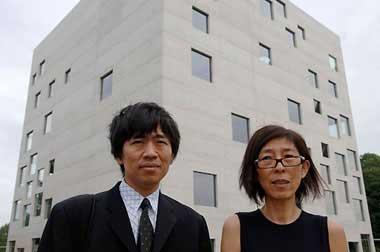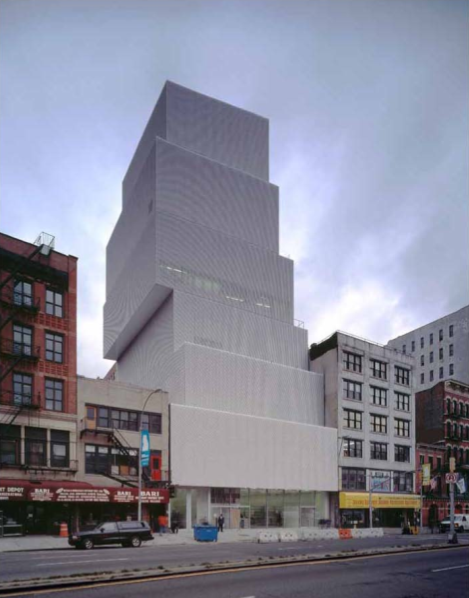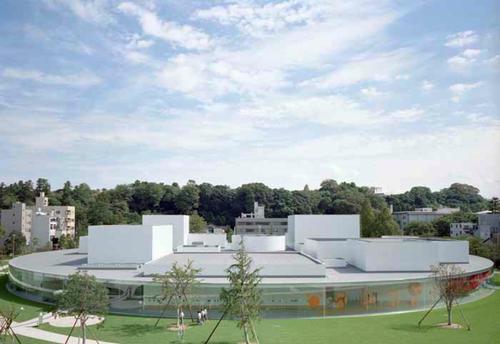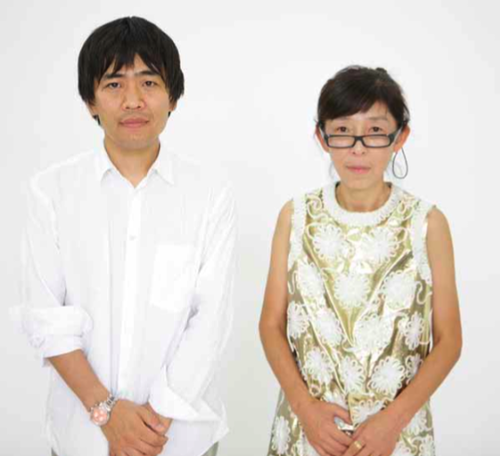
A usually melancholy springtime ritual for lovers of the building art is the announcement of the latest winner of the Pritzker Prize for Architecture. Thus the revelation of this year’s surprise winners—Kazuyo Sejima, 53, and Ryue Nishizawa, 43, principals of the Tokyo firm SANAA (Sejima and Nishizawa and Associates)—has been cause for rejoicing among those who treasure the honorees’ delicately calibrated and deeply humane sensibility. They are further unusual in architecture as a female-male pairing not married to one another, and rarer still, one in which the senior partner is a woman.
The $100,000 Pritzker was instituted in 1978 by the Chicago-based Pritzker family, owners of the Hyatt hotel chain, whose claim that this would become the Nobel of architecture struck some observers as rather presumptuous, to say nothing of quite ironic, given that the donors have erected so many banal structures in cities around the world. That skepticism seemed hardly misplaced when in 1979 Philip Johnson, the dark prince of Modernism, was named the first Pritzker recipient, a choice that hinted at a certain cynicism and want of imagination.

More admirable figures immediately followed: Luis Barragán (1980) and James Stirling (1981). But thereafter (with intermittent happy exceptions) the Pritzker went either to stars with overinflated reputations—Kevin Roche (1982), Hans Hollein (1985), Gordon Bunshaft (1988), and Jørn Utzon (2003)—or lesser-known architects whose reputations could not be inflated by any accolade—Gottfried Böhm (1986), Christian de Portzamparc (1994), Sverre Fehn (1997), and Paulo Mendes de Rocha (2006).
This year’s selection of Sejima and Nishizawa, however, marks a significant departure from past Pritzker practices-–including those that adversely affected the prize’s credibility. In 1991 the award went to Robert Venturi but not his collaborator and wife, Denise Scott Brown, with the specious explanation that it is bestowed on individual practitioners, not firms. Persistent rumblings about that gratuitous snub—made worse because there were thirteen male winners before Venturi but no women whatsoever—evidently prompted the Pritzker to play catch-up ball by selecting the team of Jacques Herzog and Pierre de Meuron (2001) and the first female recipient, Zaha Hadid (2004).
With Sejima and Nishizawa, in contrast, there is not a hint of remedial tokenism or backpedaling for the award’s prior lapses. SANAA richly deserves an honor that now takes on new luster thanks to the current Pritzker jury, which is headed by the British arts patron Peter Palumbo and includes one earlier laureate, Renzo Piano (1998).

SANAA is best known in the United States for two exceptional museum commissions: their Glass Pavilion (2001–2006) at the Toledo Museum of Art in Ohio, and the New Museum (2003–2007) on New York City’s Bowery. Along with their 21st Century Museum of Contemporary Art in Kanazawa, Japan (1999-2004), this nearly contemporaneous trio of public galleries offers an impressive demonstration of the designers’ virtuosity within one functional category, and shows the remarkable breadth of expression they are able to wrest from the restricted Minimalist palette.
The Kanazawa museum is a low-rise circular structure meant to serve as a unifying center for a small provincial city that, like most Japanese communities of all sizes, is sorely bereft of non-commercial civic cynosures. The building’s round ground plan was adopted to make it inviting and accessible from all approaches, and the nearly invisible curving glass elevations are intended to eliminate an off-putting official aura and attract ordinary townspeople with little experience of museum-going.
The Toledo Museum’s freestanding exhibition building, which houses its noteworthy glass collection, makes similar use of literal transparency. But more than being just an extra-large vitrine, this gently contoured, intriguingly layered, and teasingly reflective display space takes a high place in the long line of variations on one of classic Modernism’s enduring themes, the glass pavilion.

Minimalist architecture is thought to require an extraordinary degree of perfection in materials, finish, and detailing in order to compensate for the lack of range inherent in this severely reductive aesthetic. Yet SANAA’s repeated (though never repetitive) use of pure geometric forms, unadorned white surfaces, and large expanses of clear glass (seemingly held in place by little more than the designers’ willpower) is not in the least dependent on the top-of-the-line specifications characteristic of Ludwig Mies van der Rohe’s early and late Minimalist masterpieces: his jewel-like German Pavilion at the Barcelona International Exposition (1928-1929) and the majestic Seagram Building (1954–1958) in New York City.
Instead, Sejima and Nishizawa focus our attention through masterful handling of light and space. Unlike many other high-style architects, they pay little obvious attention to the finer points of joints and surfaces. Their uncanny ability to triumph over physical and financial limitations is most apparent in their New Museum in Manhattan, a slender, off-kilter high rise shoehorned into an improbably tiny midblock site that the architects exploit with all the cunning of urban planners inured to the impossibly tight building lots of Tokyo.
Advertisement
Though the New Museum is far from flawless—the lighting is often infelicitous and the galleries are not ideally proportioned—it is nonetheless miraculous in its economy. It cost a thrifty $50 million, in contrast to big-city museums that easily run four or five times as much.

Personal presentation plays an important role in architects’ advancement. Philip Johnson’s access to corporate boardrooms unquestionably benefitted from his impeccable navy pinstriped suits and commanding black Corbusier spectacles. Zaha Hadid’s outsized éclat derives in large measure from her dramatic dress sense and tempestuous demeanor, which make her seem the prima donna in her own private Aïda.
Thus a recent photograph of Sejima and Nishizawa is refreshingly antithetical to architectural power portraiture. Nishizawa resembles an amiable novice yoga instructor in his rumpled white shirt, while the adorably dorky Sejima, wearing a doll-like frock and droopy eyeglasses, brings to mind a Roz Chast character in the flesh, bemused and a bit bewildered. So, for that matter, are those of us who had long given up the Pritzker for dead, as it now springs back to life thanks to these worthy beneficiaries.

